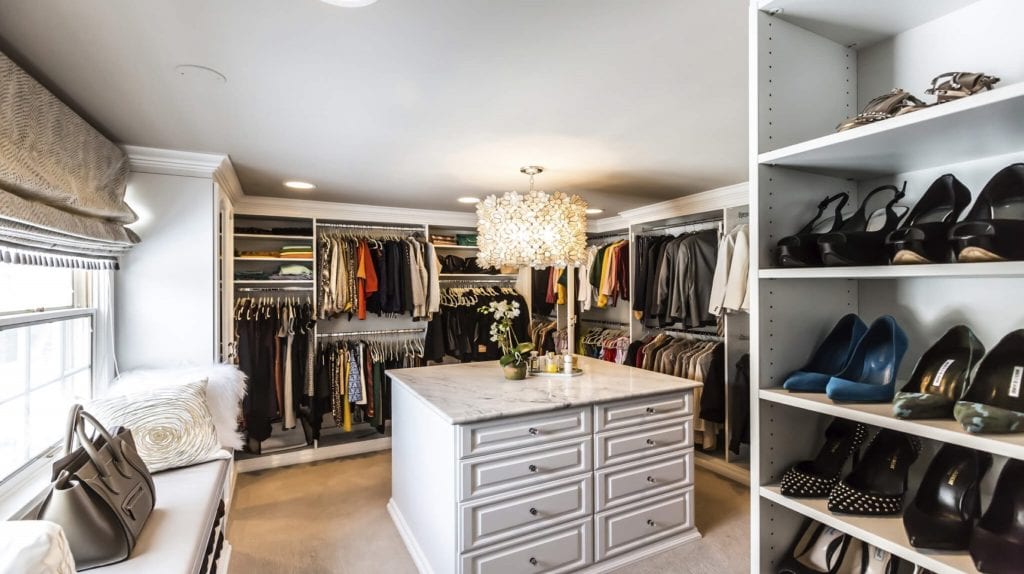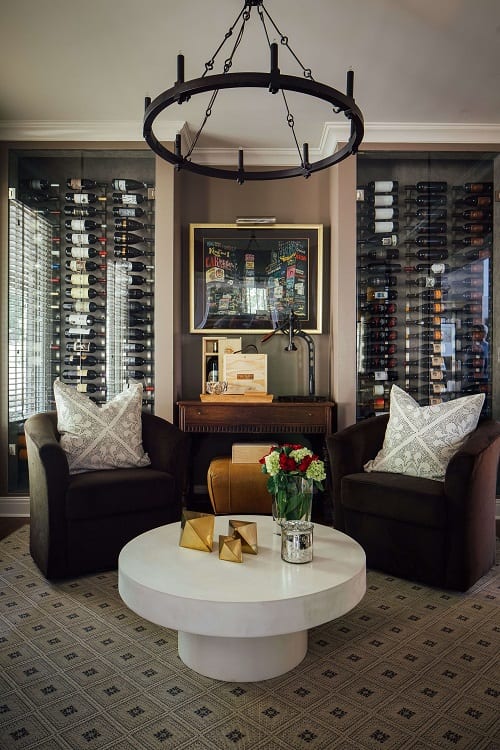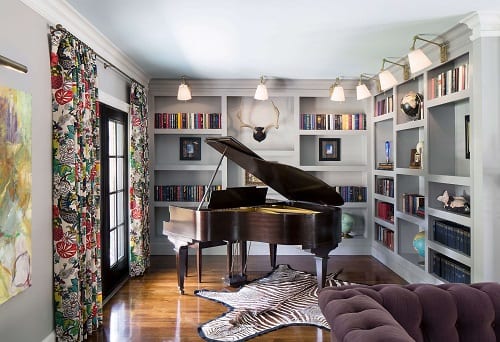
Homebuyers often prioritize a perfect kitchen and great room to share with friends and family, and sometimes want a “man cave” for casual entertaining, too. Yet 85 percent of Americans agree that it’s important to have time when they are completely alone, according to a Pew Research Center study.
The number of Americans who meditate, a typically solitary activity, jumped from 4 percent in 2012 to 14 percent in 2017, according to the 2017 National Health Interview Survey.
Carving out a “me-space” for meditation, yoga, reading, knitting, relaxing or napping in your new home requires some thought and organization.
“It’s important to figure out why you feel the need to have these spaces,” says Chad James, principal of the Chad James Group interior design firm in Nashville.
Once you have thought through what you’d like to create, James says you can start looking for underused places in your home.
“If there’s a dining room that you only use twice a year, maybe it’s a good idea to make that room a space that’s geared toward something that you enjoy,” he says.
For example, James suggests that people who like to read use their dining room as a quiet nook by adding cozy armchairs and oversized rugs.

Closet Reorganization
While a me-space can be carved out of almost any room in the house, a common project is to design a hyper-organized walk-in closet with space for quiet activities.
“We often create a dream closet and me-space out of a large walk-in closet or a secondary bedroom for our clients,” says Charles Waterman, owner of Closets by Design in Southeast Pennsylvania. “Ideally, there’s room for a storage island for keepsakes, a place for a Keurig coffeemaker and a sitting area with chairs and an ottoman.”

To get started, Waterman says he talks with his clients about their daily routine and family life.
“That helps them recognize that they can remove things they don’t use to create space for things that are relevant to them,” he says.
One recent client wanted to recreate Kim Kardashian’s closet as her “me-space,” says Christine Kazigian, marketing manager at Closets by Design.
“We converted a small bedroom into a space with seating, a mini-fridge for wine, an island for extra storage and designated space for her shoes and furs,” Kazigian says.
In another project, Waterman says they built a table with a hydraulic lift for a hidden sewing machine that pops up when the homeowner is ready to sew.
Closets or former bedrooms with windows offer the option of a built-in window seat with soft pillows for reading, relaxing and meditation.
“You don’t need a lot of space for meditating and a repurposed closet is probably the best room for that,” says Tyler Hill, co-owner of Mitchell Hill interior design firm in Charleston, S.C.
Multipurpose Yet Serene
A room with multiple functions can sometimes appear cluttered, but careful design can accommodate several purposes more easily.
“We worked with one client with a huge laundry room, the size of a dining room,” Hill says. “We ended up dividing that room so that she now has a private office with a desk that folds into the wall and matches the cabinets, so she can use the floor space for yoga. We even had space for a comfy couch where she can read her mail and even nap.”
The homeowners and Hill created this space with resale value in mind, too, since it can easily function as a homework space or for other uses in the future.
In his own home, Hill created a multifunctional me-space in a bedroom that works as his writing nook, a cardio exercise room and even as a guest room, since a twin bed fits into one corner.
“Exercise equipment is never pretty, so you can look for drapes to cover it when not in use or find a piece of art that will attract attention away from it,” he says.
One way to keep a multifunctional room serene is to use neutral colors.
“It’s important, especially with small spaces, to keep it very quiet,” Hill says. “If the me-space room is connected to another room, it’s good to make them visually connected with decorative items or a similar color palette.”
It’s All About You
The idea of a me-space is to create a corner of your home that reflects something meaningful to you, such as a collection of items from your travels.

“In a yoga studio, you could blow up a really cool photo of a nature scene or something you like in an interesting frame,” Hill suggests. “In an office or bedroom, you might want to create a collage of family photos, such as black-and-white photos in a red frame.”
Depending on your personality and tastes, Hill says a lower level “she-cave” can be a female version of the traditional man cave.
“You could do a cool glass ping-pong table and jazz up the space a little, but also lighten it with creamy white paint and brighter lighting,” he suggests.
If you have a collection of watches, scarves or accessories that you enjoy, Waterman suggests creating a storage space such as velvet-lined shelves so you can more easily see them.
When you’re ready to carve out a me-space, start by deciding how you will use the space and the ideal items to keep there for comfort and beauty. Then start reimagining your closets and small spaces to see where you can fit in that little room of your own.

Michele Lerner is an award-winning freelance writer, editor and author who has been writing about real estate, personal finance and business topics for more than two decades.

 Feng Shui and Beyond: How to Connect Your Spiritual Side with Your Newly Built Home
Feng Shui and Beyond: How to Connect Your Spiritual Side with Your Newly Built Home